










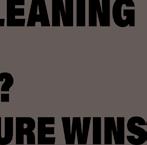




JANUARY 2023 © Copyright 2023 American Trade Magazines All rights reserved. ■ IS YOUR DRYCLEANING BUSINESS THE CORRECT SIZE? ■ THE BEST CULTURE WINS Looking Ahead to 2023 ®

When dealing with laundry stains, your reputation rides on getting the outstanding results The Laundry Two deliver.
RiteGo® laundry spray spotter quickly penetrates to absorb collar & cuff stains, perspiration, ground-in soil and more, all without brushing. Turn to Laundry TarGo® to remove any tough oil based stains that remain behind.

Use The Laundry Two with confidence on shirts, wedding gowns... anything you're washing or wetcleaning.
Both Laundry TarGo and RiteGo are chlorinated-solvent free, biodegradable, noncombustible and California 2013 VOC and Prop-65 compliant.
Use them to deliver stain-free laundry and wetcleaning. You'll build your reputation for quality - which is what keeps customers coming back.
FROM COLLARSAND CUFFS THE LAUNDRY T WO ™ ARE RIGHT FOR YOU! TO THE REALLY TOUGH STUFF... FROM COLLARSAND CUFFS THE LAUNDRY T WO ™ ARE RIGHT FOR YOU! TO THE REALLY TOUGH STUFF... To learn more, visit ALWilson.com or call 800-526-1188 A. L. WILSON CHEMICAL CO.
a STAIN WIZARD at ALWilson.com
Become
drycleaner

January 2023







Vol. 89, No. 9
FEATURES
Looking Ahead to 2023
The past couple of years have held more than their fair share of challenges, so what can we expect from 2023? We’ve asked industry professionals and economic experts what they see coming down the road as we enter a new year.
Is Your Drycleaning Business the Correct Size?
Is your business making the best use of the resources you have available to take advantage of new opportunities? Are underperforming stores hurting your company’s overall health? We examine the choices that could make a big di erence for the future of your company.
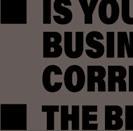
The Best Culture Wins
A positive workplace culture helps retain valuable employees and goes a long way toward providing customers with the service they deserve. There are a lot of myths surrounding how to generate such a culture. The truth? It takes a lot of work.


If you need a little help finding this month’s hanger hidden on our cover, here’s a clue. Good luck!

2 American Drycleaner, January 2023
AMERICAN AMERICAN
® 8 19 24 Talk of the Trade 6 JANUARY 2023 © Copyright 2023 American Trade Magazines All rights ■ IS YOUR DRYCLEANING BUSINESS THE CORRECT SIZE? ■ THE BEST CULTURE
Ahead
2023 HUNG UP ON THE HIDDEN HANGER?
Looking
to



Help Clean up Your Operations Your All-in-One Solution for Dry-Cleaning Management Local Customer Service Customizable Reports Routes Racking Anti-Theft Employee Management More than Just Point of Sale Clean Notify Customer Messaging Order Ready Notifications Pick up and Delivery Reminders Paperless Invoicing Options Manager Updates We can help you save money across your dry-cleaning business 800.406.9649 sales@cleanerbusiness.com cleanerbusiness.com Ask us how to save money on credit card processing fees!
Getting 2023 into Focus
While 2022 was a better time for most than the preceding couple of years, there were still plenty of challenges, and that “new normal” dry cleaners had been looking for was slow to appear. We at American Drycleaner are ready to turn the page and get this new year started with our readers.
Our first feature of the year is, appropriately, “Looking Ahead to 2023.” We asked industry professionals and economic experts what they believe the coming year will look like for small businesses in general and dry cleaners in particular. While there are still challenges on the horizon, there are reasons for optimism.
Publisher
Charles Thompson
312-361-1680 cthompson@ATMags.com
Associate Publisher/ National Sales Director



Donald Feinstein 312-361-1682 dfeinstein@ATMags.com
Editorial Director
Davis
Our second feature — “Is Your Drycleaning Business the Correct Size?” — asks the questions owners need to answer to ensure they’re making the most of their opportunities without wasting resources in areas where they could be better put to use. Do your assets need to be refocused? We examine the choices that could make all the difference.
We round out this issue with “The Best Culture Wins.” This feature covers an educational session at the 2022 Clean Show given by Sean Abbas, president of Threads, Inc., a software company he co-founded to help organizations review employees on culture. While there’s no end of advice from those who will charge to create a positive culture in your business, Abbas offers pointers on the hard work necessary to actually make it work.
And this issue isn’t the end of these discussions. There will be expanded versions published on our website, www.americandrycleaner.com, in the coming weeks.
It’s a new year, and we’re glad you’re here with us to ring it in! We’ll be with you every step of the way.
Correction
Due to a reporting error, the location of Martinizing Dry Cleaners in a photo caption on p. 20 in our October 2022 issue was incorrect. The correct location is in Elk Grove, California. We apologize for the error.
American Drycleaner (ISSN 0002-8258) is published monthly except Nov/Dec combined. Subscription prices, payment in advance: U.S., 1 year $50.00; 2 years $100.00. Single copies $10.00 for U.S. Published by American Trade Magazines LLC, 650 West Lake Street, Suite 320, Chicago, IL 60661. Periodicals postage paid at Chicago, IL and at additional mailing offices.
POSTMASTER, Send changes of address and form 3579 to American Drycleaner, Subscription Dept., 125 Schelter Rd., #350, Lincolnshire, IL 60069-3666. Volume 89, number 9. Editorial, executive and advertising offices are at 650 West Lake Street, Suite 320, Chicago, IL 60661. Charles Thompson, President and Publisher. American Drycleaner is distributed selectively to: qualified dry cleaning plants and distributors in the United States. The publisher reserves the right to reject any advertising for any reason.
© Copyright AMERICAN TRADE MAGAZINES LLC, 2023. Printed in U.S.A. No part of this publication may be transmitted or reproduced in any form, electronic or mechanical, without written permission from the publisher or his representative. American Drycleaner does not endorse, recommend or guarantee any article, product, service or information found within. Opinions expressed are those of the writers and do not necessarily reflect the views of American Drycleaner or its staff. While precautions have been taken to ensure the accuracy of the magazine’s contents at time of publication, neither the editors, publishers nor its agents can accept responsibility for damages or injury which may arise therefrom.
Bruce Beggs 312-361-1683 bbeggs@ATMags.com
Editor Dave Davis 312-361-1685 ddavis@ATMags.com
Digital Media Director
Nathan Frerichs 312-361-1681 nfrerichs@ATMags.com

Production Manager
Mathew Pawlak
Advisory Board
Jan Barlow Mike Bleier John-Claude Hallak Monika Manter Wesley Nelson Kyle Nesbit Fred Schwarzmann Vic Williams Wayne Wudyka Contributing Editors
American Drycleaner, January 2023 www.americandrycleaner.com
4
Dave
PRE-INSPECTION
Dan Miller Diana Vollmer Martin Young Office Information Main: 312-361-1700 www.american drycleaner.com Subscriptions 847-504-8175 ADC@Omeda.com










































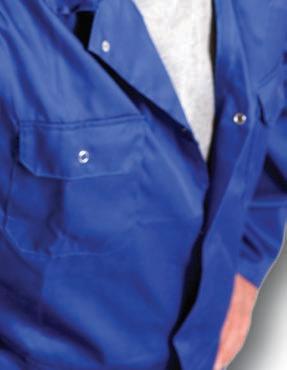





About Iowa Techniques Iowa Techniques is a manufacturer and distributor of unique products that work in a wide variety of industries and applications, and currently focuses on helping dry cleaners make smart choices that impact the bottom line in their plant operations. When your water heater dies, DON’T replace it! Get a DynaFluid 2000 from Iowa Techniques! Getting Steamed? the (800) 727+1592 | www.iowatechniques.com With steam from your boiler and a cold water source, this little valve makes an infinite supply of hot water. It outperforms water heaters by every measure, cutting costs and increasing productivity. Call Iowa Techniques today and learn how the DynaFluid Valve will help your business! (800) 727+1592
Predictions for 2023
With a new year comes a renewed sense of optimism for many, but after some challenging times, there are more than a few small-business owners who might feel a little hesitant when opening the first chapter of 2023. What will the new year have in store for the drycleaning industry?
For this American Drycleaner Your Views survey, we asked our audience about what they believe the coming year will bring to them and their businesses.
When asked what they believe their sales volume will look like in 2023 when compared to the last couple of years, the majority see a brighter future, with 15.4% saying volume will be “much improved,” and 50% believing they will see a “slow but steady increase.” About a fifth (21.2%) think “it will remain at current levels,” while 9.6% reported they expect “fewer items coming in,” and 3.8% feel they are in for a “steep decline.”
When asked about the steps they are taking to improve business in the coming years, our respondents offered multiple paths to success. Some of these included:
• Better training for the employees, and perhaps a chance to be more selective in the accounts that we take on.
• Advertise more and provide educational information to our customers.
• A continued emphasis on knowledge, time and effort. Attracting premium garments, doing premium work, at a premium price.
Most of our respondents also believe that one of the thornier issues that has hounded the drycleaning industry — the labor market shortage — will start to stabilize.
Just over half (53.8%) believe that labor “will remain a major pain, but not get any worse,” while 23.1% feel that “it will start to become easier to find people to work.”
On the ends of the spectrum, 3.8% predicted “people will be coming in, looking for jobs,” while 19.2% forecast that “staffing will become even more difficult.”
When it comes to inflation, another issue that has been dogging the economy in the past year, our respondents’ outlook was more of a mixed bag. Almost an equal number believe “inflation will be on the rise all year, and so will prices” (40.4%) and “pricing will continue to rise, but level off in 2023” (36.5%). “Prices will be steady,
What is your prediction for your sales volume in 2023, compared to the past 24 months?
What is your prediction for your sales volume in 2023, compared to the past 24 months?
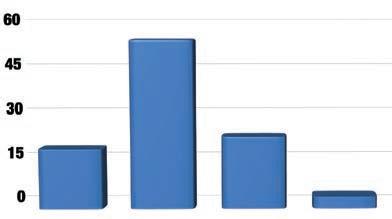
0123ADC
Much improved
Much improved
15.4%
Slow but steady increase
15.4% 19.2%
Slow but steady increase
It will remain at current levels
It will remain at current levels
50.0% 53.8%
3.8%
I expect fewer items coming in
I expect fewer items coming in
19.2%
Staffing will become even more difficult
Staffing will become even more difficult
50.0% 53.8%
It will remain a major pain point, but not get any worse
It will remain a major pain point, but not get any worse
21.2% 23.1%
21.2% 23.1%
9.6% 3.8%
9.6% 3.8%
3.8%
Steep decline
Steep decline

What do you expect from the labor market in 2023?
What do you expect from the labor market in 2023?
It will start to become easier to find people to work
It will start to become easier to find people to work
People will be coming in, looking for jobs
People will be coming in, looking for jobs
neither dropping nor rising” was the prediction of 11.5%, while 9.6% believe “inflation will gradually decrease during 2023” and 1.9% feel “we’ve seen the worse, and things will start to quickly improve.”
We concluded our questions by asking for additional comments from our respondents. Responses included:
• Quality cleaning will always do well, and keep putting prices up — people will pay for quality.
• There has been a big shakeout in the industry, with many cleaners going out of business. In my area, I see it and I am getting many new customers looking for a new cleaner.
• I believe we are currently back to life as usual. Some clients and business have disappeared. Just like every business, you have to hustle ahead rather than continue to look behind.
The “Your Views” survey offers a current snapshot of the trade audience’s views. The publication invites qualified subscribers to American Drycleaner emails to participate anonymously in the unscientific poll each quarter.
12:06 PM

6
www.americandrycleaner.com
American Drycleaner, January 2023
TALK OF THE TRADE
Charts.indd 1 12/13/22
0123ADC Charts.indd 1 12/13/22 12:06 PM


Looking Ahead to 2023
After some trying years, are better times ahead?
By Dave Davis, Editor
Anew year often means a fresh start, but for dry cleaners who have faced challenge after challenge for years, and especially since 2019, many may feel apprehensive as we open 2023. Their simple question: What’s next?
While experts believe we still face some of the effects brought on by the pandemic and evolving customer habits and demands, there are reasons to feel optimistic that the new year will shine brighter than the old.
CLOUDS ON THE HORIZON
As we enter January, one thing is certain: There are a lot of unknowns in the coming months.
“While there are going to be different challenges, the big question is what’s going to happen with the economy,” says Mary Scalco, CEO of the Drycleaning and Laundry Institute (DLI). “Dry cleaning, in some respects, is dependent upon disposable income. What happens with that?”
While an unsteady economy is a headache cleaners would rather avoid, Scalco says at least it’s a familiar one.

“It’s certainly a much different challenge than what we faced coming out of the pandemic,” she says. “The eco-
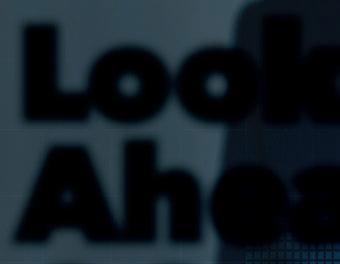
nomics are something we’re a little more used to — we’ve faced this before. I think, in 2023, the loss in the industry will have stabilized. I think we’ll be done with the shakeout. Those plants that are left are stronger, so they’ll be able to weather that. And, again, it’s a familiar situation — it’s not a drop off the cliff as with the pandemic.”
The biggest difference between the start of 2023 and where we were in the beginning of 2022 is inflation, says Holly Wade, executive director of the National Federation of Independent Business (NFIB) Research Center.

“Over the last 12 months, inflation has become an enormous challenge for small-business owners,” she says, “with one-third of owners reporting that it’s their single most important problem right now compared to 18% 12 months ago.”
And, while the recovery from economic depths of 2020 was welcome, it also added a few twists and turns to the roller coaster many business owners were on during 2022, says economist Chris Kuehl, managing director of Armada Corporate Intelligence.

“If you go back a year, you were dealing with really rapid growth in 2021,” he says. “Companies were a

8 American Drycleaner, January 2023 www.americandrycleaner.com
(Photo: iStock.com/Galeanu Mihai)















Patent Pending Deep Vapor Cleansing with No Chemical Additives www.greenearthcleaning.com A Pathway To Proven Effective vs. Enveloped Viruses*** “Regular Trash” Waste Classification Extended Garment Life Reduced Energy Use** Non-V.O.C. Odor-Free Environmentally Non-Toxic Fluid* Global Environmental Brand Online Store Locator Technical Training Certified Landlord Approval Customized Marketing On-Site and Virtual Consultation Technical Documents and Resources Equipment Optimization Fashion Brand Relationships **Regenerative Filtration reduces energy use by up to 55% *Canadian Minister of the Environment Board of Review 2012 ***MRI Global Independent Test Report Sept. 2020 Maximized Sustainability .
Looking Ahead to 2023
little surprised at how fast things had rebounded in ’21, but they knew that it was going to slow down in ’22. They didn’t want to load up a lot more inventory or expand too fast. When you compare that to now, it’s almost reversed.
“2022 was very slow, at least compared to ’21, and businesses were worried about inflation and recession, but they think ’23 is going to be better. In both cases, they were being anticipatory. And a year ago, they were anticipating things slowing down. Now they’re anticipating things speeding up.”
PREPARING FOR NEW CHALLENGES
Unlike the dark days of the pandemic, the difficulties that might be coming in 2023 are things for which cleaners can better prepare themselves to face, Scalco says.
Cleaners can plan, she says, “by making sure they position themselves well so that if there is an economic downturn, they’ll be ready. It’s the same thing we’ve been talking about since the pandemic — and even before that. I remember cleaners would always say to me, ‘Well, you should fight to bring back the suit, and fight to make people dress up.’ I said, ‘How about you fight to clean what they wear, and to become a convenience?’”
This preparation requires dry cleaners to adopt a different mindset — and share it with their customers.
“Everybody’s perfectly capable of mowing their own lawn, but hardly anybody does,” Scalco says. “They hire a lawn company, because that company can do it better and quicker, and you can get back to other things. We can do all their wash and dry cleaning, as well as cleaning their households, so much better than they can. So, I think sometimes the biggest hurdle is in your own mind. You have to believe that’s what you are. You’re not just there for their Sunday best — there is no more Sunday best. I think our industry challenge is getting that message to consumers and making sure consumers don’t just think about us as ‘suit-and-tie’ kind of people.”
Cleaners should also prepare for economic volatility in the coming months, just to be safe, and examine their own business models to make sure they are protecting their profit margins.
“Inflation should ease up over the next few quarters due to aggressive rate hikes by the Federal Reserve,” Wade says. “However, those actions will likely lead the economy into recession territory. Small-business owners will need to adjust again to changes in consumer spending if that occurs. Unfortunately, this is not new territory for most small-business owners having to adjust opera-
tions over the last two years through waves of business restrictions and general spending shifts by customers.”
“Labor and energy cost increases will put tremendous pressure on net profits,” says Christopher White, executive director of America’s Best Cleaners (ABC), “thus forcing cleaners to lose money or finally realize they need to price their services according to a ‘cost-plus’ profit model and not a ‘fear of lost revenue’ model. We have historically underpriced our services and defined value in our own minds instead of letting the customer define value. Do not react to the few clients who are price-conscious — focus on the clients who appreciate what you execute for them weekly.”
While the next few months may be difficult, some economic indicators are now showing that, if a recession comes, it might be short-lived.
“It does appear that inflation pressures have peaked, and that is good news,” Wade says. “Gas prices have fallen from June when a gallon of gas reached $5.02. And so far, consumer spending remains generally strong despite higher interest rates and a lot of talk about a pending recession.”
“A lot of the data is pointing toward what amounts to a recovery by late second quarter or early third of 2023,” Kuehl says. “So, if that holds, a lot of the studies now are saying that we’re going to go through this dip for about a year — basically, in the last two quarters of 2022 in the first two quarters of 2023 — and then it starts to turn. The good news is there’s light at the end of the tunnel that is not an oncoming train. If we can get through the next couple of quarters, things should start to turn.”
HAVE WE HIT THE ‘NEW NORMAL’ YET?
All throughout the tumult of the past couple of years, dry cleaners have been looking for the stabilization in the markets that they all crave. Being able to predict the future with a bit of certainty, this thinking goes, is better than the chaos we’ve been experiencing.
So, have we reached this “new normal” yet?
“Yes and no,” White says. “I think there is still room for more consolidation and the first half of 2023, with the economic outlook as it stands, will put more pressure on dry cleaners, landlords, and the availability of capital for operations to invest in technology.”
Cleaners need to accept that the market has changed, Scalco says, and that they need to change with it.
“The people who are going to thrive are those who are going to position themselves as being able to take care of any of your household and apparel items — and that
10
www.americandrycleaner.com
American Drycleaner, January 2023








































































Our Automation Systems will help you do more - with less! Are you short-handed? ReliableAffordableAvailable Simple design along with great customer service. Keep it simple! Provides the best return on investment. Made in the USA. Delivery available in as little as 2 weeks. 501-420-1682 garmentmanagement.com 247 EXPRESS Dry Clean at Your Convenience
Looking Ahead to 2023

we are a convenience,” she says. “I don’t think we are ever going to go back to the old, traditional dry cleaner. I don’t think you’re going to survive doing that.”
One of the major changes is in what people wear, both for business and for casual situations.
“There’s something to be said for comfort — humans love comfort,” Scalco says. “There’s nothing comfortable about wearing a tie, or wearing high heels all the time. So, I think that spandex isn’t going away. Athleisure isn’t going away. It might get a little more dressed up, but that trend of seeing cashmere sweatsuits and high-end athleisure is going to be the wave of the future.”
That being said, Kuehl sees that the work-from-home trend has started to reverse for certain occupations, which is good news for dry cleaners.
“Dry cleaning is seeing a bit of a rebound, simply because the assumptions made in 2020 was that we’re all going to be virtual — we would never wear pants again, and nobody was ever going to go back to the office,” he says. “That’s turned out to be an inaccurate assumption. And you’ve got a lot of businesses that are returning to the office, and suddenly, you’ve got more of a demand for people to look work-appropriate.”
More importantly for dry cleaners, Kuehl believes, is that the right people are returning to the office.
“Dry cleaners have always been very sensitive to the professions,” he says. “At the end of the day, the bluecollar worker is probably not bringing a lot in for dry cleaning. But lawyers, accountants, people in the medical profession and those types are the core market. Those are the groups that are going back to the office, saying,
‘Yeah, we can’t do this stuff virtually.’ So, there should be a return to a more normal behavior.”
A SHRINKING INDUSTRY
One of the new realities of the drycleaning industry as we enter 2023 is that there are simply fewer people in it — both dry cleaners and those who support them.
“The state of industry is that, obviously, it’s getting smaller,” White says. “It’s consolidating. And with that, it’s creating, in my mind, some pretty significant challenges for operators.”
One is that there are fewer resources for dry cleaners with questions or problems to pull from.
“With so much consolidation in the allied trades, we have lost having seasoned professionals in the supply, equipment, and mechanical services sector visiting shops and sharing knowledge,” White says. “The supply side has moved to an almost 100% order-taker mode or online ordering. Long gone in many markets are technical professionals coming into your shop monthly to bring a new idea or product. Everything is price-driven, which amplifies the question of the value of your local supplier.”
Repairs can also be problematic, White says: “On the mechanical side, our industry has lost so many available skilled troubleshooters and service professionals that now those that are still in business have to be very careful where they spend their time, and rightfully so.”
Also missing, he says, are those with the depth of know-how that comes from years of experience: “We’re seeing a brain drain, or the loss of knowledge we’re seeing with so many multi-generational businesses closing, people retiring out of the industry, attrition and closures because of COVID.”
FINDING LABOR OR FINDING ALTERNATIVES
Perhaps the biggest holdover from 2022 for dry cleaners will be dealing with the dwindling pool of labor — and paying more for the labor they can find.
“Right now, trying to manage higher costs in operating their business and recruiting and retaining employees are the two biggest challenges facing small-business owners,” Wade says. “Owners are having to adjust business operations and increase their prices to absorb higher compensation, and inventory and supplies costs.”
“The biggest factor now is wages,” Kuehl says. “For a small business, that’s killer. They can kind of adjust to the supply chain and oil prices, but if their cost of labor keeps going up, they know that is a permanent problem —
12 American
January 2023 www.americandrycleaner.com
Drycleaner,
(Photo: iStock.com/Anatolli Kovalov)
There’s more: We’re just two members of NIE’s team of experts. NIE has been handling fabricare insurance since 1915!

www.smrtsystems.com SMRT
NOT JUST THE SMRT CHOICE, BUT THE RIGHT CHOICE.
NOT JUST THE SMRT CHOICE, BUT THE RIGHT CHOICE.
NOT JUST THE SMRT CHOICE, BUT THE RIGHT CHOICE.

SMRT is the streamlined solution for you and your operation.
SMRT is the streamlined solution for you and your operation.
SMRT is the streamlined solution for you and your operation.














Experience powerful business management and accelerated growth under one roof, made by dry cleaners, for dry cleaners.
Experience powerful business management and accelerated growth under one roof, made by dry cleaners, for dry cleaners.
Experience powerful business management and accelerated growth under one roof, made by dry cleaners, for dry cleaners.











Everyone at SMRT Marketing has been great working with us. It’s critical that we have someone who understands our POS. If I were to give some advice to anyone who's interested [in SMRT Marketing],
would say step on the gas. Just go full force and deal with all of the revenue that comes with it later.
Everyone at SMRT Marketing has been great working with us. It’s critical that we have someone who understands our POS. If I were to give some advice to anyone who's interested [in SMRT Marketing], I would say step on the gas. Just go full force and deal with all of the revenue that comes with it later.
Everyone at SMRT Marketing has been great working with us. It’s critical that we have someone who understands our POS. If I were to give some advice to anyone who's interested [in SMRT Marketing], I would say step on the gas. Just go full force and deal with all of the revenue that comes with it later.
Everyone at SMRT Marketing has been great working with us. It’s critical that we have someone who understands our POS. If I were to give some advice to anyone who's interested [in SMRT Marketing], I would say step on the gas. Just go full force and deal with all of the revenue that comes with it later. Will Waterstraat Helena’s Cleaners
Will Waterstraat Helena’s Cleaners
Will Waterstraat Helena’s Cleaners
Will Waterstraat Helena’s Cleaners
READY TO GET SMRT WITH YOUR MARKETING? SCHEDULE A DEMO (919) 849-5500 MARKETING@SMRTSYSTEMS.COM www.smrtsystems.com 1017 Main Campus Drive, Suite 1600, Raleigh, NC 27606
SMRT READY TO GET SMRT WITH
SCHEDULE A DEMO (919) 849-5500 MARKETING@SMRTSYSTEMS.COM www.smrtsystems.com 1017 Main Campus Drive, Suite 1600, Raleigh, NC 27606
YOUR MARKETING?
SMRT READY TO GET SMRT WITH YOUR
SCHEDULE A DEMO (919) 849-5500 MARKETING@SMRTSYSTEMS.COM www.smrtsystems.com 1017 Main Campus Drive, Suite 1600, Raleigh, NC 27606
MARKETING?
I
SMRT READY TO GET SMRT WITH YOUR MARKETING? SCHEDULE A DEMO (919) 849-5500 MARKETING@SMRTSYSTEMS.COM www.smrtsystems.com 1017 Main Campus Drive, Suite 1600, Raleigh, NC 27606
SMRT
Is Your Drycleaning Business the Correct Size?

Matching a company’s footprint to economic realities
By Dave Davis, Editor
While businesses can endure for years, decades and even centuries, the one thing they can’t do is stagnate. Changing economic conditions, shifting societal norms and evolving customer demands put pressure on business leaders to make sure their companies are still serving their clients to the best of their abilities.
Dry cleaners are no stranger to this necessity, and the past couple of years have underlined this fact. Keeping up with fluctuating circumstances can mean adding locations, shutting down underperforming storefronts or changing the very way the company interacts with its customers.
SLIMMING DOWN
Anton’s Cleaners of Tewksbury, Massachusetts, has seen its fair share of changes during its more than 100 years of operation. Today, the company has 37 locations, with 26 of those being processing plants.
“We feel, with the plant, you have more knowledgeable and sophisticated employees on the premises and can offer quicker service,” says Arthur C. Anton Jr., the company’s chief operating officer. “That’s why we had built the business on that sort of model.”
With that many locations, some tough decisions had to be made during the difficult days of the pandemic. “Since 2019, we’ve closed seven locations — three in 2019 and four in 2020,” Anton says. “Three of those
locations had been open for more than 50 years. Those were closed because of COVID, and the decision was all volume-driven. You’re not going to pay someone to sit there for 40 hours for just a handful of customers.”
The slowdown also affected the company’s other locations in different ways. “When the floor fell out as COVID hit, we chose to open our locations only 40 hours a week so we could continue to pay our managers their salaries,” Anton says. “We also used to offer same-day service, and we rarely do that now.”
Anton made sure to communicate with his customers to minimize any negative effect these decisions had on their future business.
“I personally called the top customers — probably 10 to 20 customers, depending on the volume — and told them we were moving, and they appreciated that,” he says. “Most of them went to other locations. We also put many of them on our route business. Some were a little frustrated because they had a cleaner right there in their neighborhood, but it wasn’t worth keeping those stores open just for those few customers.”
ALTERING THE BUSINESS MODEL
Anton’s Cleaners made use of the fact that route service for pickup and delivery has become an increasingly attractive alternative to the brick-and-mortar storefront in the eyes of drycleaning customers.
www.americandrycleaner.com American Drycleaner, January 2023 19
(Photo: iStock.com/vchal)
Tom Prionas, president and general manager of Fabric Care Cleaners in Indianapolis, also converted one of his company’s locations to a route system.
“In April 2020, the three-year lease of one of our stores was coming due,” Prionas says. “We already knew it wasn’t performing very well, and we decided we didn’t want to renew the lease. Coinciding with the lease renewal was the uncertainty of COVID, so we decided to close that store. When we closed it, we tried to convert as many of those customers to our routes, and we used the 80/20 rule. We took the 20% best customers — who added 80% of the revenue for the store — and added them to our routes.”
Prionas believes that the decision to substitute routes for the underperforming store was the right call, both at the time and for the future.
“We gained the reduction of fixed expenses from that store — the rent and the staff — to save 80% and operate it with one route driver, or add customers to a route that already exists,” he says. “That vastly reduces the expense of serving those customers.”
But there were other factors to consider.
“The downside is, once we closed the store, we were never going to reopen it,” Prionas says. “We’re not going to go back to that spot and open a new store now.”
There were emotional considerations, as well. “We didn’t like doing it, but it was the right thing to do. We offered our staff the opportunity to work in other locations, but some of them took it hard.”
Chris and Craig Bamberg, owners of Platinum Dry Cleaners in Naples, Florida, made a similar decision, going from four locations to two, and then adding expanded route service.
“As we started coming out of COVID, we took a look at two locations and made a decision that we felt that those geographic areas were ripe for delivery,” Craig Bamberg says. “Even though this is a more seniorcitizen-based market, they were extremely receptive to it. We call it the ‘Amazon Effect.’ We took a long, hard look at that, and we decided it was time.”
Bamberg believes the company’s structure is now optimized for the population and the economy.
“The two remaining locations are very tried and true — very established and flagship-oriented,” he says. “They are in our repertoire, and they’re going to stay in the repertoire for a very long time. But for the other two, the timing was just right. The leases were coming up, and we had to decide if we wanted to renew.”
Familiarity with the area and with their customers were key to making the decisions, Bamberg says. “We feel that we’re very in touch with our customer base. Chris and I have five solid years in the drycleaning market, and we’ve lived here since 1996, so we know the market and felt educated in making that move.”
CHANGING WITH THE TIMES
Matching services to consumer demand is another way of making sure a dry cleaner’s business stays relevant to its customers. While Gary Maloney, owner and president of Nu-Yale Cleaners in Southern Indiana, didn’t close any of his 15 storefronts, he did revamp some efforts during the pandemic.
“We stayed open,” he says. “We cut our hours down and we cut our trips (to the plant) down. We don’t do same-day (service) anymore. We used to, but now we’re doing everything next day. We worked on cutting our expenses and just surviving through the times. There’s a song lyric that stuck in my mind: ‘If you’re going through hell, keep on going. You might get out before the devil even knows you’re there.’ And that was our approach to all this — just keep going.”
Automation and other factors entered into his plans.
“We started putting lockers in all of our stores so people could have more access,” he says. “If they’re coming in early in the morning or late at night, we gave them a key fob, and they went in and got their clothes and dropped them off. And, as that evolved, we took five stores and put in the kiosks. They definitely gave more access to the customer.”
THE EXPANSIVE MINDSET

As with any business, there are cycles of growth and contraction in the drycleaning industry, and while Prionas, Anton and Maloney have either closed some storefronts or altered their business, they’re not closing the door on building for the future, thanks to lessons from their past.
Fabric Care Cleaners started as a single-location laundromat in 1960 and expanded into dry cleaning in 1965. For many years, it stayed small, but in the mid-2000s, an opportunity for expansion came its way.
“In 2008, a 100-year-old cleaner was going out of business that had three good-sized delivery routes, so we talked to them about acquiring those routes,” Prionas says. “We only had one location back then. So, we talked to the owner, and we got two of the three routes they had, and that got us into home delivery. These delivery routes were to single-family homes in established neighborhoods and so forth. That got us the experience.”
The idea for Fabric Care Cleaners to add stores came from examining the existing customer base and their
20
2023 www.americandrycleaner.com
American Drycleaner,
January
needs, including the area hotels that were providing much of their business.
“Soon after, we were thinking that, since we’re going downtown to serve our hotel clients every day, sometimes two, three or four times a day, what if we had a store in that area?” Prionas says. “We opened our first drop store in 2013. It took a while for that to establish itself, so we subleased some space to a seamstress to share the expense.”
Taking advantage of these and other opportunities, Fabric Care Cleaners now has six locations and multiple routes. While the past couple of years haven’t been conducive for expansion, Prionas believes that future growth is a definite possibility.
“I foresee us being open to ‘good fit’ opportunities that might come along, or that we seek out,” he says.
Anton has also taken advantage of “good fit” opportunities. “In 2018 and 2019, we purchased two highvolume locations,” he says, noting that opportunities such as these have to be fully examined before going forward. “You look at your competition and see what’s in the area. Is there a bad cleaner in the area? Are there no other cleaners in the area? That’s what you look at.”
When it comes to expansion, Anton believes that finding existing opportunities rather than breaking ground on new properties is the way to go.
“We’ve built stores from scratch, and it takes years,” he says. “I’m getting older, and I don’t want to wait. People will tell me there’s a great location here and there, but it takes years to really build a business and get the right people in there, and right now, we can’t get people to work. So, I’m not going to go into an area and try to open something — that doesn’t make sense to me.”
Maloney has also picked up two new storefronts in recent years. “They basically said that if I take over their lease, I could have their business,” he says. “We were trying to build volume up, and they were decent volume stores, so it made sense.”
He’s also looking for ways to diversify his business, recently adding restoration services for his customers.
“I think we’ll be doing more things in different areas, like expanding what we do in the restoration field,” he says. “We’re part of the CRDN franchise, and they’ve added art and now electronics, so that keeps expanding the capabilities of what we can do. It’s almost a different business, but then again, it’s not. I don’t think I could survive with dry cleaning alone.”
THE DECISION TO HOLD STEADY
French Cleaners in West Hartford, Connecticut, is a fifth-generation family business that has been serving
Wemayneverbethe lowest initial cost, but wehavelowestcostofownershipbecause:
Products have proven to last up to 10 times longer than similar production in this industry and applications.
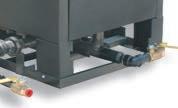
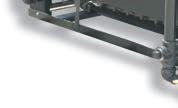



We have many installations with steam boilers that have been in service for over 50-years, 10 hours per day.
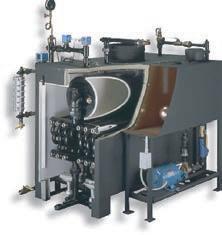
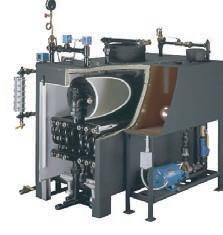




Our heating surface or amount of steel absorbing energy has always been 2 to 3 times that of other units (up to 6 sf of heating surface per boiler horsepower, which some units are closer to 2 sf of steel per hp, and some even 1 sf).
5930 Bandini Blvd. Los Angeles, CA 90040
Tel: 323-727-9800
www.americandrycleaner.com
January 2023 21
American
Drycleaner,
NEVERA COMPROMISE FOR QUALITY OR SAFETY
www.parkerboiler.com
its customers since 1911. Since its beginning, it has only had one store, and that’s something that Manager Mark Hatch doesn’t see changing any time soon.
“I think we’re really lucky,” he says. “We have the one location, so I have my management team in one location. My route drivers all report to that location. Our customer service staff is here. My production staff is here, so we interact with a lot of customers.”
Hatch believes that having one storefront, rather than have the business spread throughout the community, makes this customer interaction and feedback more concentrated and effective.
“Every day, we have multiple regular customers who we’ll see every time they come through, so we get their direct feedback constantly,” he says. “We really have a good bead on what customers are asking for. Whenever we make some small change, like in our packaging, we’ll hear about it right away. We have a lot of customers who are really candid with us, but they do it in a nice way. If they think something’s not right, or if they think maybe inspection is slipping, they’ll let us know. We take our complaints seriously. If there’s a mistake, such as a missing button, we’re able to drill down and try to figure out what the root cause was.”
While it has only one location, French Cleaners has offered pickup and delivery services for decades.
“Routes got added very early,” Hatch says. “We actually have some pictures of vans and route delivery trucks from the 1940s, so we always have been in that game. We had radio-dispatched vans before cellphones. It was never
really a huge portion of our business until the late 1980s and early ’90s, when routes starting to get really big. We had two route vans for a long time, and then it just picked up ever since the pandemic. We’ve probably doubled our route volume in the last few years.” About 40% of French Cleaners’ business now comes from its route services.
While he’s not opposed to growing or opening new locations, Hatch says the fit has to be right for him and his business.
“I think our business is a perfect size,” he says. “I’ve been to industry meetings and met amazing entrepreneurs who are buying up stores, acquiring other customers, picking up routes, doing wash and fold, and other things. So, I think, ‘Well, why can’t we do all this stuff? We could get really complex and have multiple locations.’ We’ve had opportunities pop up here and there. One of them specifically was fire restoration. We seriously considered it, and we did a lot of groundwork.”
Ultimately, Hatch and his team decided against the expansion.
“We took a few months to consider it and ultimately decided against it because we didn’t want it to take focus away from our current customer base,” he says. “If I shift my time, a certain percentage of my management staff would be shifted to that new venture. It definitely can be done in a good way, but it’s important to consider those things and decide if you should expand.”
THE ROLE OF RISK

When it comes to deciding whether to change your business or stay the same, risk must be weighed against any possible benefit the choice may bring. And while nothing is guaranteed in business, there are steps an owner can take to reduce risk.

“In the context of expansion or retraction of retail locations, minimize your worry by doing homework and knowing your marketplace,” Craig Bamberg says. “We do not feel you can open a location only based on a commercial real estate agent providing numbers of estimated cars passing by a strip plaza. What is your core product or service? Does it ‘fit’ in your proposed geographic location? What about the surrounding residents? Do they purchase your core product of service?”
After these issues are addressed, he believes there’s one question that has to be answered: “Does the location financially work in your overall plan? The rent may be just too expensive. It may take too long to cultivate the market in this location at that monthly rate. Or, you might conclude that it will work. For us, it’s all about the education.”
“We are also very cognizant of the fact that if we need to pivot, we need to have a Plan B,” Chris Bamberg says.
22 American Drycleaner, January 2023 www.americandrycleaner.com
(Photo: iStock.com/RomoloTavani)
While the risks of opening a new storefront or buying a competitor’s business are more obvious, there are also risks to closing stores. Again, this can be minimized with some research and communication.


“When we close a location, we try to plot the customers and put them on a map,” Anton says. “We see where they’re coming from, and how close they are to our location. Then, we see if we can move these customers to another location, or if we have a route in that location. You’re trying to minimize the loss by strategic planning.
“Sometimes, we have given them an incentive to continue to come to us for a year, so that they don’t forget about us. The customers may be disappointed that their store has closed, but it’s like if your coffee shop closes and you have to go across the street. You’re going to be annoyed, but eventually you get used to it.”
CHANGE IS THE ONLY CONSTANT

Business plans must evolve as time goes on if the owners want to stay relevant to their customers’ needs, Maloney says.
“It’s going to change, whether you like it or not,” he says. “You just have to ask yourself which one of these things can I live with, and which one doesn’t fit my business model? I’ve been in plants that have no automation, but they’re very efficient at their manual operation. I just have a bigger problem with labor in my market. You look where your pain points are and then see how you can get around them.”
Maloney believes that part of navigating the turns of running a business is having a network of peers.


“You have to listen to the customer,” he says, “but more than that is being active in associations in the industry. You’ve got 15,000

to 20,000 experiments out there — everybody puts their two cents together and comes up with a plan. You listen to it, and if it sounds good, you do it, and if it doesn’t quite fit you, you can pass on that. This industry is really good about sharing.”



Hatch echoes Maloney’s thoughts on this matter: “There are tons of dry cleaners who have done all this
different stuff. People will say that they’ve had success while these other people haven’t. If you’re curious about offering a new service or buying a piece of equipment, you can get about 10 or 12 opinions on something. There’s so much information out there. It’s really a disservice to your employees and your customers to not do the research on these things.”

www.americandrycleaner.com American Drycleaner, January 2023 23
The Best Culture Wins
“Not everybody digs my message, because my message is a little confrontational,” he says. “It’s going to challenge what most people say in the area of culture.”
WHY CULTURE IS IMPORTANT
By Dave Davis, Editor
The word “culture” often comes up when talking about what can make a business stand out from competitors, both from a customer service standpoint and from the perspective of keeping good employees. But how can a business owner help to foster a positive work culture?
While there are many voices in business coaching circles offering methods of quickly creating such an atmosphere, the real answer is that it takes hard work.
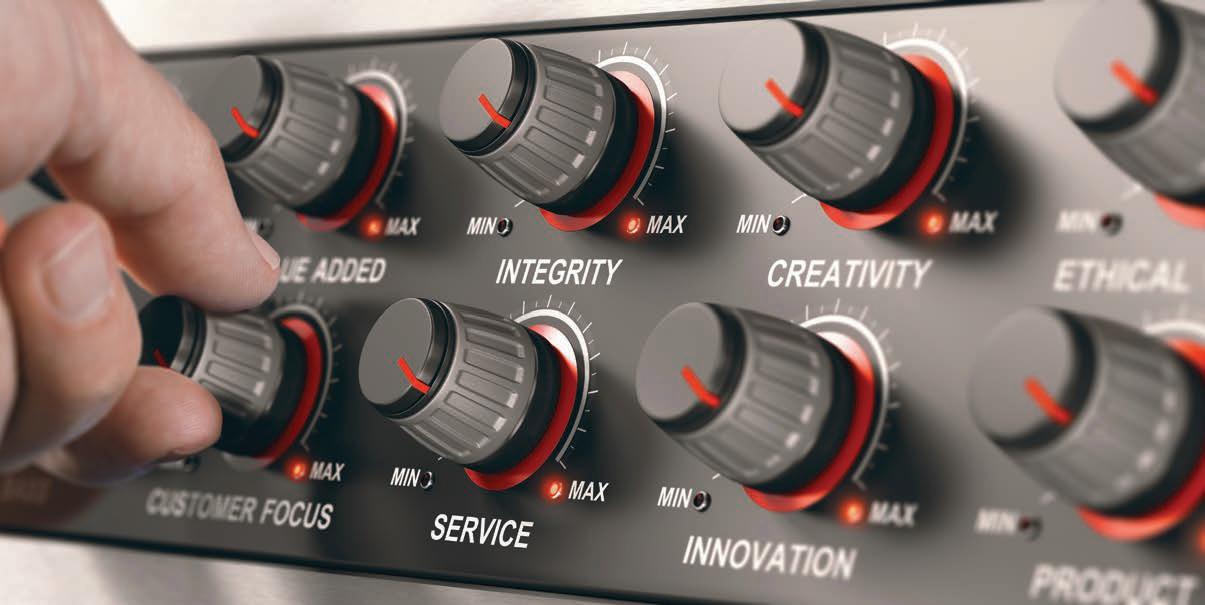
This was the message of Sean Abbas during “Best Culture Wins,” an educational session during last year’s Clean Show. Abbas, president of Threads Inc., a software company he co-founded to help organizations review employees on culture, warned his audience that his presentation was not for those who are looking for the easy path to success.
The goal of generating a great work culture is an important one, Abbas says, both for leadership and for the employees.
“I never go to a place where somebody says, ‘Our culture doesn’t really matter. It doesn’t really serve me,’” he says. “And here’s why: It can help you grow. It can help you keep the peace. It can help prevent turnover. It can help you hire people. It can help people satisfy an objective by going to an organization where the culture and engagement of their employees is valued.”
Abbas believes there are other, more business-centric reasons to foster a positive atmosphere.
“The other thing that’s important to remember: It’s OK to want a good culture to help your company grow its profits,” he says. “What I know about small businesses is a little different from what most people know about small businesses, and that’s this: You care about your employees. You’re portrayed as people who don’t care about employees, and who basically load up the money
There are no shortcuts to creating culture, but the journey is worth it
24 American Drycleaner, January 2023 www.americandrycleaner.com (Image licensed by Ingram Image)
at the end of the day and put it in the trunk of your car and drive to the bank to deposit. That’s what we all do, right? In fact, we don’t do those things. We take a lot of the money that we make, and we reinvest it back into people we hire, because it’s OK to say that we actually care about them and love them.”
THE BEST PATH TO A POSITIVE CULTURE
Abbas believes that there are no shortcuts to building a great culture. Instead, it takes hard work, clear objectives, selflessness, honesty, humility, and time.
“Culture is not something that you can go out and buy, no matter how many times you’ve been told that you can go buy the favor of your employees,” he says. “You simply can’t do it, and here’s the truth. Quite frankly, most people are unwilling to give the time and effort necessary to do this.”
He illustrated the shortcut mindset that surrounds building culture by searching “workplace culture” on Google and displayed the “feel-good” stock photography images of people getting along.
“The most trusted sources — like Forbes and Inc. Magazine — are putting out this kind of information and convincing you that culture is something that it’s not. Most of you, your entire life, when it comes to culture,
have been lied to about it, and deep in the back of your mind, you know what culture is.”

Those peddling quick-fix solutions, however, have found a source of income in the field, Abbas says: “There are a lot of people today who are interested in monetizing these ideas. So, once we understand that culture is for sale, and that it is actually a big business, we start to understand some other things about it. When something becomes big business, we get people called thought leaders.”
Abbas says that listening to lectures about the HR programs huge companies such as Zappos, Netflix and Southwest Airlines undertake, watching slide shows and hearing famous quotes isn’t going to move the needle appreciably at a small business, such as what most dry cleaners operate.
In the last decade in the United States, Abbas says, spending on cultures and engagement in business has increased by $24 billion.
“I once took a survey, and it said my culture was rated at a 3.2,” he says, “but if I spent $10,000 with a consulting agency, we could move the culture to ‘world class,’ which is 3.6. At the end of the day, you can’t buy culture.”
Paying to bring in third parties to facilitate employer/employee relationships, Abbas says, usually isn’t necessary.
American Drycleaner,

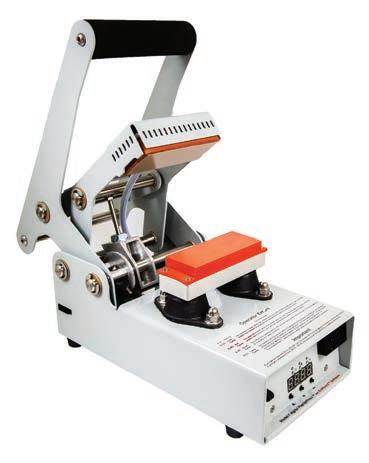

www.americandrycleaner.com
January 2023 25
For Contactless Automation at the Front Counter, Plant and Routes Toll Free 877.906.1818 www.ezpi.us A Proven Industry Leader & Recommended by the Consultants You Trust. The Ultimate Heat Seal Machine Saves You Money, Time and Labor •Presses and Solutions for all Budgets •Best and Free Technical Support Forever •Proudly Made in the USA •We are the Only Manufacturer of TÜV SÜD Safety Certified Presses; Includes OSHA and UL Safety Standards •Low Cost of Ownership – Very Reliable, Easy to Fix and Upgradeable •Pre-printed Sequentially Numbered Heat Seal Barcode Labels in One Day
“Your employees actually would like to talk to you and your employees would actually like to engage with you, if you’re willing to take the time and make the effort to do so.”
REAL-WORLD EXPERIENCE
After serving in the U.S. Marine Corps and then graduating from college, Abbas started working at a startup industrial laser manufacturing company where he was the company’s ninth hire. “The pay wasn’t all that great, but what was so cool when I interviewed with the company, all eight people were at the interview and asked me questions.”
When explaining the job to his wife, Abbas told her that, while the pay was low, he sensed something special about the company, and that it would grow quickly: “I told her, ‘I just love this place. I just feel at home there. I’m excited to go there. I want to be a part of this thing.’”
After a few years, the nine-person company grew to be a 90-person company. While that growth was positive, Abbas noted that the feeling of the place started to change.
“What happens, when a business starts small, is that it’s really cohesive,” Abbas says. “As it grows, it starts getting employee handbooks and policies and procedures, and the employees start saying things like, ‘This isn’t a family environment anymore.’”
The company stopped growing at this point, Abbas says, not because of the economic conditions, but because of a disconnect between leadership and the em-
ployees. At this point, Abbas had grown into a sales and marketing position, and the board asked him to be the president of the company.
“They said, ‘We need to go back to what we were before, and you represent that,’” Abbas recalled. He was flattered, and the pay was double what he was making at that point, but he refused, believing he didn’t have the experience or expertise necessary for the position, and he didn’t want to hurt his team members by making the wrong decisions.
The board refused his refusal. “They said, ‘You’re going to do it because you said ‘no’ the first time,’” Abbas recalls. “‘You understand what’s at stake here.’”
Abbas started working on building his skill set and doing what he thought was best for the company, but says he made a crucial mistake. While he focused on expanding the facilities, hiring rapidly, and working on financial metrics and risk management, he took his focus off the thing that first brought him into the company: the culture.
Phrases such as, “This place doesn’t feel like it used to,” “We have too many rules and procedures,” “We are getting too corporate,” and “It’s no fun” started to be heard around the company. “And now that I was the leader, the employees weren’t saying it about the company — they were saying it about me.”
Abbas believes he wasn’t listening to them in the right way.
“You begin to build a bit of animosity over this,” he says, “because I’m thinking to myself, ‘I’m trying to be focused on these things that are really important — you just don’t understand.’ But all they’re saying is that, ‘We’d just like a little time with you. When was the last time you came down to the bar with us?’ It had been months. They were absolutely correct.”
Still, Abbas didn’t make culture a priority until a young manager knocked on his door and provided him with a lesson he never forgot.
THE MOMENT OF CLARITY
“He comes in and tells me, ‘I’ve got this employee who’s really good at his job. He’s probably one of the best I’ve ever seen. But he’s terribly rude and disrespectful.’” This employee would refuse to train people new to the company, making statements such as, “I had to learn this on my own,” and “I’m not here to wipe your nose. Welcome to the company.”
Instead of charting an employee’s progress as an average number, putting their scores on a graph such as this one can provide valuable insight as to what that person is doing right, and what can be improved upon. (Graphic by Dave Davis, as originally presented by Sean Abbas)
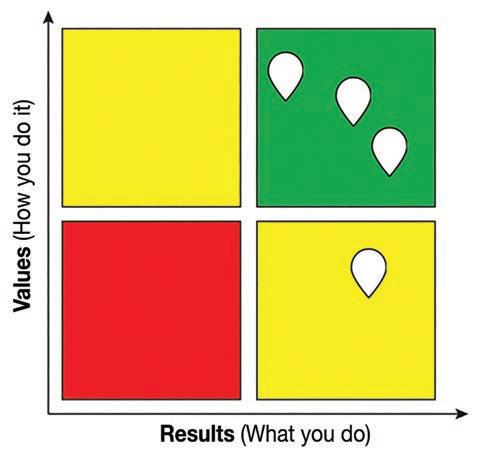
This employee also refused to listen to new ideas and would bad-mouth the manager behind his back every chance he got, undermining his authority and that of the company’s leadership. “I need to fire him,” the manager finally said. “Do you want this area fixed? I can’t have him working here anymore.”
Abbas called the human resources department and got
26
2023 www.americandrycleaner.com
American Drycleaner, January
the employee’s latest performance evaluation.
“I opened the review to the last page, and it said he ‘performs as expected, meeting expectations,’” he says. Abbas began to see a problem with the process when he saw that the manager who had just asked for the man to be fired had signed that evaluation.
The problem, Abbas discovered, was how the evaluation weighed all the factors that go into an employee’s performance.
“I looked at his scores,” he says. “Job knowledge — 5, quality of work — 5, amount of work done — 5, attitude — 1, teamwork — 1. It was all fives and ones. Add it all together and divide, and the average came up to three.”
In other words, satisfactory.
This system, Abbas saw, hid the areas where employees shined, but also where they needed to improve. By marking everyone as “average,” the company’s leadership was blind to what was truly happening.
MAKING A CHANGE
Abbas adopted a new form of evaluation — a chart with “Values” (how you do things) on the vertical axis, and “Results” (what you do) on the horizontal axis. This gives four quadrants of evaluation. When both Values and Results are low, this is the red zone, where both ar-
eas need work. When one measurement is high and the other low, this gives two yellow zones, depicting the area where the employee could improve. When both Values and Results are high, this is the green zone, where team members should strive to be.
By putting the scores taken on the previous evaluation and mapping those individual scores on this chart, a much clearer picture began to take shape. “This made sense to me,” Abbas said. “For the first time, I absolutely understood what this means.”
When Abbas put the numbers for the employee who was causing trouble for his supervisor into this new format, he hoped that the tool would help to illustrate the problem and where improvements could be made.

Things did not go according to plan.
The employee quickly grew angry, shouted his resignation, and left the plant, yelling at everyone he found on his way out.
“It was a brutal moment of my career,” Abbas says, “but it also created in me a bit of extra resolve. When this person left, the employees knew immediately that something was different. People started stepping up, and turnover in this area absolutely and completely stopped. We began to do this across the entire company
www.americandrycleaner.com American Drycleaner, January 2023 27
(Continued on page 29)
AROUND THE INDUSTRY
LA Excludes Poly Bags from Plastic Bag Legislation
LOS ANGELES — Legislators in Los Angeles met on Dec. 1 to consider banning single-use plastic bags used in groceries, hardware stores and other businesses in that area. Many dry cleaners feared that the poly bags they use to package and protect their customers’ clean clothes would also be affected by the proposed ban.
Their concerns were addressed by both local and national trade associations, who studied the issue and added the voice of the drycleaning industry to the discussion. Ultimately, the committee clarified the proposed legislation stating implicitly that the proposed ban would not extend to the dry cleaning industry.

The proposal, prepared by the LA Department of Sanitation, was heard by the city’s Energy, Climate Change, Environmental Justice and River Committee. Both the California Cleaners Association, on the local level, and the Drycleaning and Laundry Institute, on the national level, mobilized to get clarification on the issues. The organizations also submitted letters stating why single-use poly bags were necessary in the dry cleaning process.
Toran Brown, president of the California Cleaners Association, explains that a former board member of the CCA brought the matter to the organization’s attention that single-use plastic by drycleaners had been recently added to the review that was being done for a possible ban.
The CCA was able to mobilize some members in the Southern California area on the matter and reached out to DLI to discuss strategy.
“Former CCA board member Jim Douglas really took the lead on this,” Brown said. “He contacted LA City Sanitation and began to explore with them what their objectives were, and educated them on the implications from an operational standpoint within the industry.”
Brown believes that these efforts and dialogs were key in getting drycleaning poly bags excluded from this legislation.
“For drycleaning operations, there’s a much bigger
implication for us than there is, say, for a pharmacy or a hardware store that simply is just finding an alternative packaging source for their products.”
GIVING CLEANERS A VOICE
This process highlighted the value that trade organizations can provide to dry cleaners, not only in Los Angeles, but for the industry in general. Mary Scalco, CEO of DLI, believes that this type of presence is needed both at the local and the national level.
“To me, advocacy is well-placed conversations,” she says. “You need to talk to somebody, you need to know who to talk to, and you need to know what to say. When it’s on the local level, they know who knows who. They know somebody on the city council. On the federal level, it becomes a more global conversation.”
Being able to bring together dry cleaners in a region or on a national stage is one of the main benefits of having trade associations, Scalco says.
“We have the ability to mobilize all the dry cleaners in the country if we had to,” she says, “and we’ve done that in the past. We were prepared to try to do that if California escalated to the next level. You need to hear from the industry you’re regulating to find out what those consequences are.”
While the ban on poly bags would have only affected LA-area cleaners now, Scalco believes that it’s important to enter into the conversation early than when matters have already been decided on a larger scale.
“What happens whenever something like this proposal goes through, no matter where it is, it could have ramifications for the entire industry,” she says. “So, we want to make sure we’re on top of it. At a federal level, it’s easier for DLI to take the lead. But with something like the Los Angeles City proposed ban, the California Cleaners Association, being the local organization, can probably be more effective because they can actually go to the meetings and show up in person if they need to.”
28
January 2023 www.americandrycleaner.com
American Drycleaner,
(Image licensed by Ingram Image)
Local, national trade organization play role in clarifying rule for cleaners
for around 115 employees. We have several large manufacturing employers in our community — some very big brand-name employers — and our turnover was less than 2% annually.
“I began to realize that all these things that we think we have in terms of a culture problem are actually one or two individuals who need to be addressed and focused on instead,” Abbas says. “Our productivity increased, morale went up, and everything started happening differently in our organization.”
THE CORE OF YOUR COMPANY
One of the first steps in generating a positive atmosphere in your company, Abbas believes, is defining what it is you stand for — what you want your company to be, and what it will take to get there.
“In every organization, we have something called ‘core values,’” he says. “In most cases, for smaller organizations, they are unwritten. When our organization first started, those core values are absolutely crystal clear. There were no core values on the wall of our organization or on our website. Those core values lived in your head and your heart.”
These values, when properly thought out and communicated, Abbas believes, provide a valuable context for both you and your team each and every day.
“I want people to understand our core values,” he says. “First, how you do what you do matters to me significantly. It almost matters more to me than what you do. If you do something to make a mistake, but you make that mistake with the best of intentions, giving your absolute best effort, and you learn from it, I’m down with that all day long. But what I’m not happy about is people who do things, and do so at the expense of core values, or don’t really consider how these things matter.”
These values are something that can come naturally for small companies, even if these values aren’t implicitly stated.
“As an employee,” Abbas says, “when you were working next to somebody and you didn’t do what you’re supposed to do, was there HR? No. Was there a first, second, or third warning? No. There was a co-worker standing next to you, saying, ‘Hey, that’s not how this works.’ There was accountability amongst the team. There’s also a certain set of expectations.”
As a company grows, however, it’s important to start to define and communicate what is most important to you as a leader, your team and your business.
“A lot of people say a core value is an outcome — in other words, customer service is a core value,” Abbas says. “Customer service is not a core value. Core values
are to be experienced. It’s important that organizations decide what your core values are. There are organizations that say, ‘Your little company should go out and adopt the core values of Netflix or Zappos.’ That is one of the worst mistakes you could possibly make. Your core values are your core values. They should be spoken in your language.”
LEADING FROM THE FRONT
One of the biggest mistakes Abbas sees is when a company’s leadership tells the team what they should be doing to foster a winning culture, but seems to feel they are above taking action themselves.
“I go into companies all the time, and when I look at what they review their manager team on, there’s not one single comment on leadership,” he says. “This is a person you call a ‘manager’ and a ‘leader’ in your business, and there’s not one single measurement on leadership. Do they do their reviews on time? Do they give timely feedback? Are they making sure they accomplish the things that they are accountable for? These are the things that they’re supposed to be doing.”
When leadership doesn’t walk the walk they’ve been talking about, Abbas says, a winning culture will not come into being.
“The last 10 years, leadership in your organization has been slowly migrating its way to the HR department,” he says. “Leadership is not the responsibility of HR. Leadership is the responsibility of people that have those titles of leadership.”
Core values and vision, Abbas says, are handed down and exemplified by a company’s leaders.
“I understand that it is difficult to train team members,” he says. “I understand that it’s difficult to engage. But you absolutely have to start foundationally, downloading the things that are in your head as owners and as leaders in your business. You have to download those things to the people underneath you. How do you think your organization is going to carry on if the people underneath you don’t know those things?”
It can be easy to overthink creating a positive culture, but it comes down to communication and making sure actions are taken on purpose.
“Defining clear expectations is such a critical part of what core values are,” Abbas says. “If you say communication is important, tell them what about communication is important, and how much communication is important. Be very specific about those things. Again, this doesn’t have to be complicated. Just make sure that everybody and every department understands what they need to be doing in a specific area to help feed and contribute to the entire organization.”
www.americandrycleaner.com American Drycleaner, January 2023 29 (Continued from page 27)









30
January 2023 www.americandrycleaner.com 2023 RATES: One- to five-time rate: $2.35 per word, boldface $2.40 per word. Minimum charge: $50.00 per ad. Call or write for our threeand 11-time rates. If box number is used, add cost of 5 words. Display classified rates are available on request. All major credit cards are accepted.
Ads must be received by
Must
order. Paying too much for spotters? Buy 3 Get 1 Free! Buy online and save. DryCleanerSoap.com DIFFICULT TIME SALE! $1,000.00 > > > $850.00/Refurbished, $2,000.00 > > > $1,750.00/New System Includes Computer, Touch Monitor, Invoice Printer. All Name Brands & One Year Warranty! www.westerndccomputer.com 773-878-0150, westernk@msn.com Patriot Business Advisors Specializing in Selling Drycleaners in NJ, PA, DE & MD. Sell or Buy Drycleaners. WE HAVE BUYERS!!! Call Liliane at 267-391-7642 CARTS, TRUCKS & BASKETS CHEMICALS CHEMICALS COMPUTER SYSTEMS PLANTS FOR SALE www.AMERICANDRYCLEANER.com For more classifieds, visit: ENHANCE YOUR WET-CLEANING SMARTCare Detergent, Conditioner & Sizing Nature-L In-The-Wash Grease & Oil Remover EnLIGHTen Removes Stains Sodium Perborate Can’t CollarClean Cleans Collars & More Without Scrubbing KLEERWITE CHEMICAL www.kleerwite.com 877-553-3794 PLANTS FOR SALE Million $ Bizs for SALE • East Ohio River Valley Plant & PUs with Coin-ops • Maine Mid-Coastal w-PU DC- Shirts-Coinop-Linen We Build Wealth! for our Buyers & Sellers • Pre-Approved SBA Loans • Year (max) Seller Training • E & A Transition Coaching • E & A Long-Term Coaching Richard Ehrenreich, CED, SBA, F-CBI Ehrenreich & Associates, LLC 301-924-9247 Richard@Ehrenassoc.com www. americandrycleaner .com
American Drycleaner,
DEADLINE:
the 1st of the preceding month. For example, for a August ad, the closing date is July 1st. PAYMENT FOR CLASSIFIED ADS:
accompany
. . .31
EzProducts International . . . . . . . . . .25
GreenEarth Cleaning . . . . . . . . . . . . . .9

Garment Management Systems. . . . .11









Iowa Techniques . . . . . . . . . . . . . . . . .5
Luetzow Industries. . . . . . . . . . . . . . .31





Newhouse Specialty Co. . . . . . . . . . .31
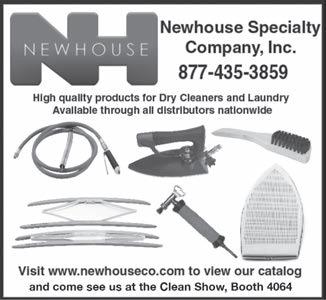
NIE Insurance . . . . . . . . . . . . . . . . . .13






North American Bancard. . . . . . . . . .27
Parker Boiler Co.. . . . . . . . . . . . . . . .21
Patriot Business Advisors . . . . . . . . .30

Realstar . . . . . . . . . . . . . . . . . . . . . IBC


Royal Basket Trucks . . . . . . . . . . . . .30
Sankosha USA. . . . . . . . . . . . . . . . .BC
SMRT Systems . . . . . . . . . . . . . .15-18


2022 RATES: One- to five-time rate: $2.20 per word, boldface $2.30 per word. Minimum charge: $25.00 per ad. Call or write for our threeand 11-time rates. If box number is used, add cost of 5 words. Display classified rates are available on request. All major credit cards are accepted.

DEADLINE: Ads must be received by the 1st of the preceding month. For example, for a June ad, the closing date is May 1st. PAYMENT FOR CLASSIFIED ADS: Must accompany order.

www.americandrycleaner.com American
January 2023 31
Drycleaner,
Poly Made for: Sankosha Metalprogetti Unipress Save 30% on Poly! Heat Seal Poly Reliable & Affordable Reduce Waste - Cut out the Middle Man - Build Profit Any Size or Gauge, Clear or Branded 10 Roll SPECIAL - 32 Roll Pallet Discount - 56 Roll Best Value 800-568-7768 CLEANERSUPPLY.COM OVER 20,000 PRODUCTS IN-STOCK American Dry Cleaner.indd 2 8/25/20 1:11 PM
World Inc. . . . . . . . . . . . . . . . . . .23
Wilson Chemical Co. . . . . . . . . .1
Business Systems . . . . . . . . . .3
Supply . . . . . . . . . . . . .
Air
A.L.
Cleaner
Cleaner’s
Business
Drycleaning Products
.7 WIRE The latest news, straight to your inbox, 2X a week THE www.AmericanDrycleaner.com 000+ Annual Visitors Advertise Today Contact Don Feinstein • 312-361-1682 SUPPLIES SUPPLIES SUPPLIES ARROW LEATHERCARE SERVICES Finest quality cleaning refinishing & repairs Leather, suede, fur, UGGs & handbags • FREE RETURN SHIPPING in USA • FOR MORE INFORMATION: www.arrowleathercare.com E-mail: bruce@arrowcare.com Call 800.54 ARROW (27769) Prepaid Shipping Program SUEDE & LEATHER SERVICE TO PLACE YOUR AD CONTACT: classifieds@atmags.com OR CALL DON FEINSTEIN 312-361-1682
SPOT
Systems . . . . . . . . IFC Union
. . . . . . .
Volume, Perc, Advertising and Abandoned Goods


10 YEARS AGO. Pump Up the Volume — Dry cleaners were expecting big things in 2013, according to the American Drycleaner Wire survey. Respondents predicted that sales volume would either “improve substantially, with at least a 5% year-toyear gain” (18.8%) or bounce back a little, with a gain of 0% to 5%” (31.3%). Approximately 38% predicted that volume would stay “essentially flat” in 2013, with 12.5% feeling that there would be a “slowbut-steady year-to-year decline of 0% to 5%.”

25 YEARS AGO. The Effects of Perc
“There is no evidence that professional drycleaners, with greater exposure to perc than any other group of people, are at any greater risk of developing cancer than their counterparts in the general population,” according to a report issued in December 1997 by Baise & Miller P.C. The 11-page report highlighted and analyzed the U.S. government’s “Toxicological Profile” of perc and the studies it citied, and was peer-reviewed circulated to the major industry associations and the Martinizing and Comet franchise organizations.

50 YEARS AGO. Getting the Word Out — As part of its public relations program — as opposed
to using paid advertising — the California Fabricare Institute started issuing weekly news releases to newspapers, TV and radio stations on matters of concern to both the drycleaning and laundry industry and also the general public. Sample topics included, “Drycleaning May Cost Less Than ‘Doing It Yourself’,” “CFI Cautions Home Sewers on ‘No Label’ Remnants,” and “Clothing Care Experts Answer Consumer Queries.”
75 YEARS AGO. You are Outta Here! — The Ohio Association, in
a bulletin, noted that a state law that permitted cleaners, laundries, furriers and press shops to dispose of customer goods remaining unclaimed longer than the legally specified time, which in Ohio was 90 days for most garments and 12 months for storage items. A notice, the association pointed out, should then be mailed to the customer, allowing an additional 30 days before the property could be sold. The Ohio Association urged professionals to consult the laws in their own states.
— Compiled by Dave Davis, Editor
32 American Drycleaner, January 2023 www.americandrycleaner.com WRINKLE IN TIME







Sankosha USA Inc. TOLL FREE: (888) 427-9120 • TEL: (847) 427-9120 www.sankosha-inc.com WISHING YOU A HAPPY AND PEACEFUL New Year!


















































































































































































































































